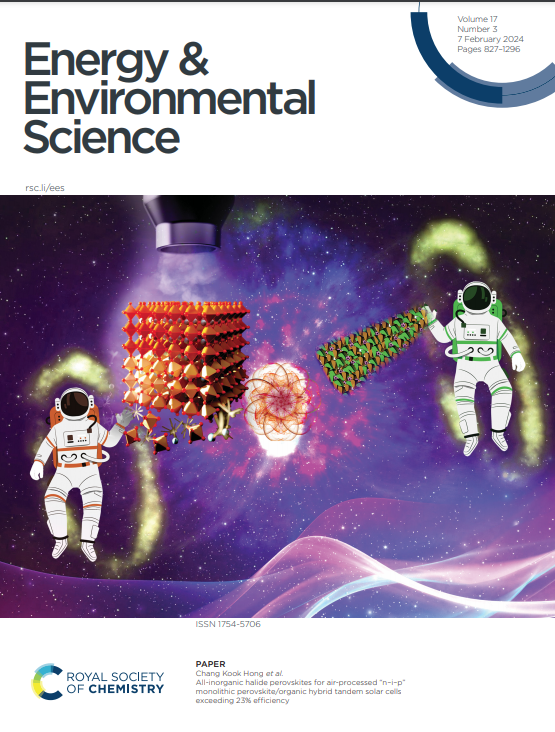通过闪光焦耳加热将废弃光伏电池升级为碳化硅
IF 32.4
1区 材料科学
Q1 CHEMISTRY, MULTIDISCIPLINARY
引用次数: 0
摘要
随着全球对清洁能源需求的增加,光伏发电的快速发展导致废旧光伏组件的处理问题日益突出。传统的回收方法面临着效率低、能耗高、环境污染等挑战。闪光焦耳加热(FJH)技术为废弃光伏电池的升级回收提供了一种有前途的替代方案。本研究采用FJH技术,将废晶硅(c-Si)光伏电池粉碎后与导电炭黑(CB)混合,制备碳化硅(SiC)。当输入电压为130 V,峰值温度为~2200℃,单次闪蒸加热周期为0.5 s时,反应效率最高。通过煅烧去除多余的碳后,重复FJH和再磨步骤获得了高纯度的SiC (>98%);大部分无机杂质元素在加热过程中被蒸发掉。闪热产品是一种很有前途的阳极材料,与其他化学或热技术相比,FJH消耗的能源和排放的温室气体要少得多,从而显著降低了成本。本文章由计算机程序翻译,如有差异,请以英文原文为准。
Upcycling waste photovoltaic cells into silicon carbide via flash Joule heating
As global demand for clean energy increases, the rapid development of photovoltaic (PV) power generation has led to a growing issue of waste PV module disposal. Traditional recycling methods face challenges such as low efficiency, high energy consumption, and environmental pollution. Flash Joule heating (FJH) technology offers a promising alternative for upcycling waste PV cells. Here, FJH was adopted to produce silicon carbide (SiC) from waste crystalline silicon (c-Si) PV cells that were pulverized and mixed with conductive carbon black (CB). Optimal reaction efficiency was achieved with an input voltage of 130 V and a peak temperature of ~2200 °C during a single flash heating cycle of 0.5 s. Repeated FJH and regrinding steps resulted in high purity SiC (>98%) after removal of excess carbon through calcination; most inorganic impurities elements were removed by evaporated during the heating process. Flash-heated product is a promising anode material, and FJH consumes significantly less energy and emits fewer greenhouse gases than alternative chemical or thermal technologies, resulting in a notable cost reduction.
求助全文
通过发布文献求助,成功后即可免费获取论文全文。
去求助
来源期刊

Energy & Environmental Science
化学-工程:化工
CiteScore
50.50
自引率
2.20%
发文量
349
审稿时长
2.2 months
期刊介绍:
Energy & Environmental Science, a peer-reviewed scientific journal, publishes original research and review articles covering interdisciplinary topics in the (bio)chemical and (bio)physical sciences, as well as chemical engineering disciplines. Published monthly by the Royal Society of Chemistry (RSC), a not-for-profit publisher, Energy & Environmental Science is recognized as a leading journal. It boasts an impressive impact factor of 8.500 as of 2009, ranking 8th among 140 journals in the category "Chemistry, Multidisciplinary," second among 71 journals in "Energy & Fuels," second among 128 journals in "Engineering, Chemical," and first among 181 scientific journals in "Environmental Sciences."
Energy & Environmental Science publishes various types of articles, including Research Papers (original scientific work), Review Articles, Perspectives, and Minireviews (feature review-type articles of broad interest), Communications (original scientific work of an urgent nature), Opinions (personal, often speculative viewpoints or hypotheses on current topics), and Analysis Articles (in-depth examination of energy-related issues).
 求助内容:
求助内容: 应助结果提醒方式:
应助结果提醒方式:


